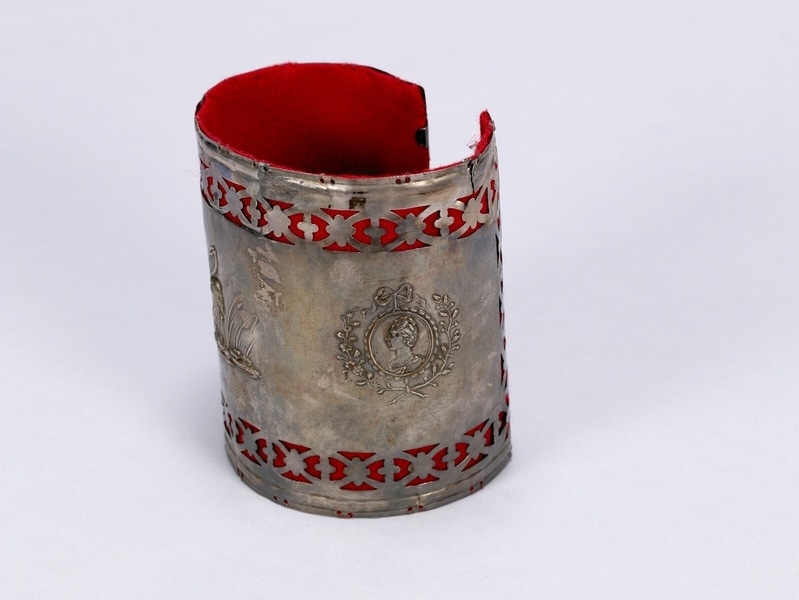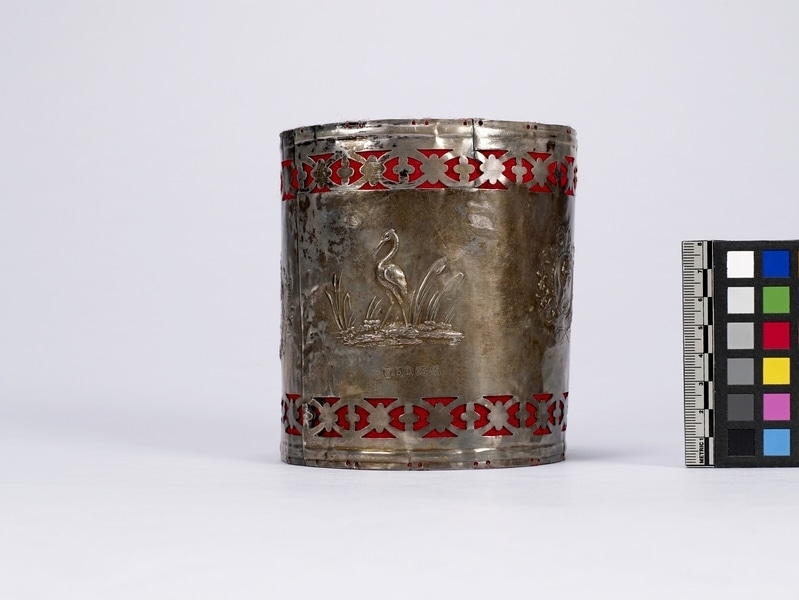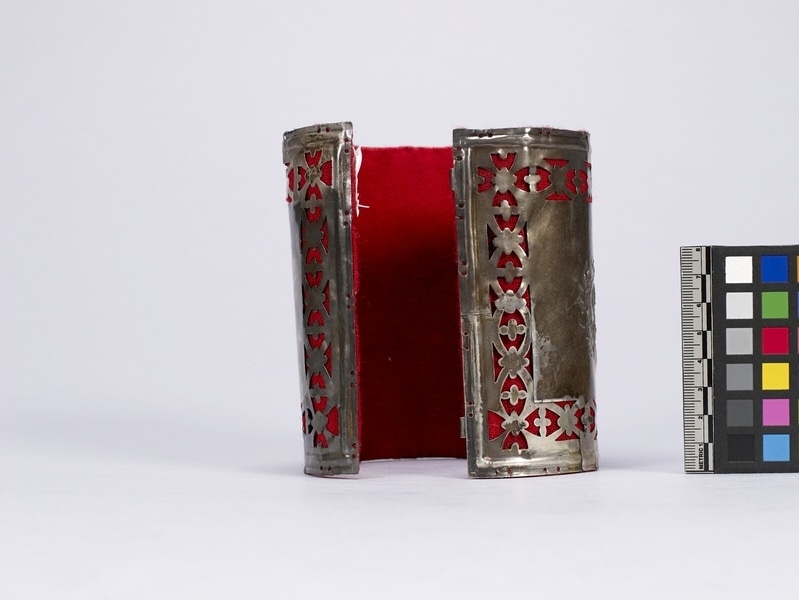Band Item Number: 1590/277 from the MOA: University of British Columbia



Description
An armband lined with red material sewn onto small holes along edge. Flower-like cutout border along the edges. In the centre is an engraving of a heron standing in cat-tail marsh. To the left is an engraved portrait in profile of King George III in a cartouche surrounded by ribbons and flowers, and to the right is a similar portrait of Queen Charlotte. Maker’s marks in five cartouches below heron.
History Of Use
Silver ornaments represent an important part of early exchange between Europeans, including fur traders, and First Nations peoples, especially in eastern and central Canada and the U.S.A. Initially, the main source of silver was British, French and Spanish coins. Most ornaments were produced by silversmiths of European origin in North America and Europe, and were actively traded only from 1760 to 1821. By the mid-18th century silver objects were produced in New England, Quebec and Montreal. Silver was used by First Nations peoples as a sign of rank. Silver ornaments in these styles continue to be produced by native silversmiths in central Canada and the U.S.A.
Cultural Context
trade; personal decoration; status
Item History
- Made by Hester Bateman (Manufacturer) in Europe between 1760 and 1821
- Owned by Kathleen E. Reif before September 9, 1993
- Received from Kathleen E. Reif (Donor) on September 9, 1993
What
Who
- Culture
- Eastern Woodlands
- Creator
- Hester Bateman (Manufacturer)
- Previous Owner
- Kathleen E. Reif
- Received from
- Kathleen E. Reif (Donor)
Where
- Holding Institution
- MOA: University of British Columbia
- Made in
- Europe
When
- Creation Date
- between 1760 and 1821
- Ownership Date
- before September 9, 1993
- Acquisition Date
- on September 9, 1993
Other
- Item Classes
- metalwork
- Condition
- fair
- Accession Number
- 1590/0277